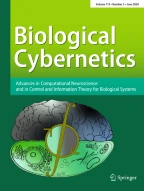Abstract.
Recent experimental results on spike-timing-dependent plasticity (STDP) and heterosynaptic interaction in various systems have revealed new temporal and spatial properties of activity-dependent synaptic plasticity. These results challenge the conventional understanding of Hebb's rule and raise intriguing questions regarding the fundamental processes of cellular signaling. In this article, I review these new findings that lead to formulation of a new set of cellular rules. Emphasis is on evaluating potential molecular and cellular mechanisms that may underlie the spike-timing window of STDP and different patterns of heterosynaptic modifications. I also highlight several unresolved issues, and suggest future lines of research.
Similar content being viewed by others
Author information
Authors and Affiliations
Additional information
Received: 4 February 2002/Accepted: 26 April 2002
Acknowledgements. I thank B. Berninger, C. Chow, Y. Goda, S. Nelson, M. Poo, and J. Rubin for comments on the manuscript. The author is a recipient of a Burroughs Wellcome Fund Career Award in the Biomedical Sciences.
Correspondence to: e-mail: gqbi@pitt.edu, Tel.: +1-412-6489921, Fax: +1-412-6481441
Rights and permissions
About this article
Cite this article
Bi, GQ. Spatiotemporal specificity of synaptic plasticity: cellular rules and mechanisms. Biol Cybern 87, 319–332 (2002). https://doi.org/10.1007/s00422-002-0349-7
Issue Date:
DOI: https://doi.org/10.1007/s00422-002-0349-7
